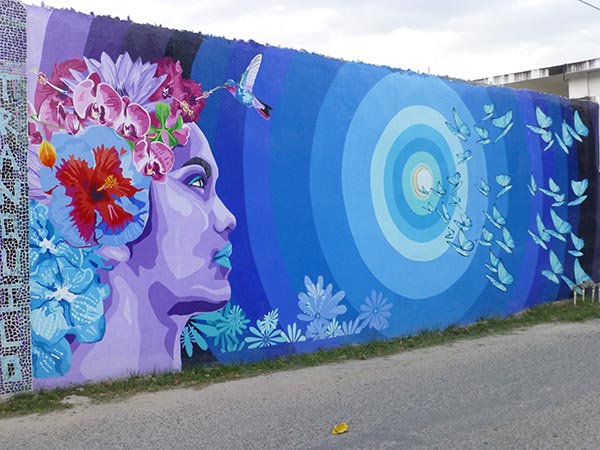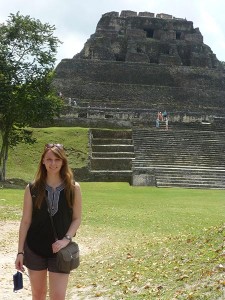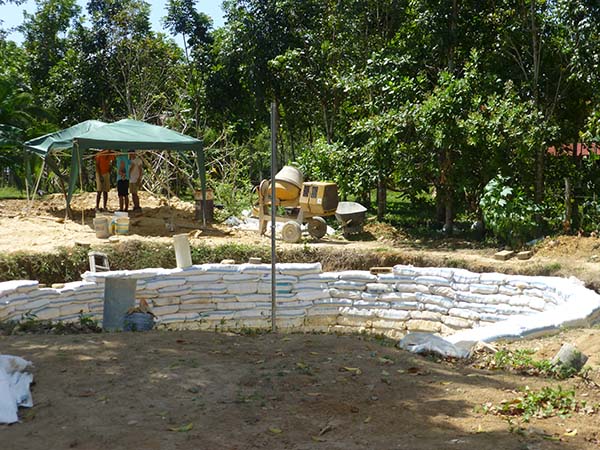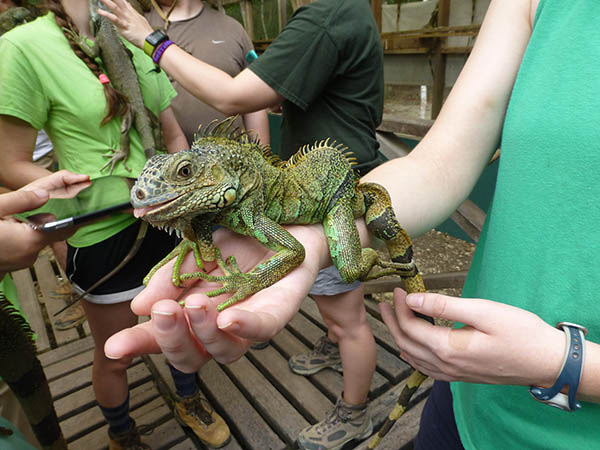Kelly Arnholt: Student Report from 2016 Alternative Spring Break in Belize


My trip to San Ignacio, Belize, was certainly fun and memorable, and probably one of the most rewarding experiences I have had at UT. This trip was my first time out of North America, and I am so glad that I was able to go on a trip where I was able to stay with a local family as opposed to a hotel in a touristy area. Working on a service project with other dedicated volunteers and getting a glimpse into Belizean culture was an amazing way to spend my spring break.
For our service project, we worked on a site that will eventually become a girls’ home. In Belize, children who are in the foster care system age out of it at 16. After that, they have no more state support, and often have few skills to help them get a job. Girls can be particularly vulnerable to exploitation in this situation. For these reasons Nancy and Jaime, the parents of the host family we stayed with, wanted to do something to alleviate this problem. On the land Nancy inherited from her grandfather, they are building a home where girls can come live after the foster care system to learn new skills and to have a stable environment. The home will be self-sufficient, with houses, kitchen and laundry facilities, and food grown on the premises. The structures on the property are being built using earth bag construction methods. Chicken feed bags are filled with a mixture of dirt and lime, which turn hard like brick when they get wet and then dry. This is a cost effective method that is also well suited to the weather in Belize. It is also very labor intensive, which is why our group came to help build the root cellar of one of the future buildings.

One of the most interesting aspects of the project was the way that Jaime and Nancy are using ideas from local Mennonite communities in its design. Mennonites have several characteristics in common with the Amish, such as plain dress, use of horse and buggies, and refraining from using electricity and many other modern amenities. Belize is a developing country and many areas are still very poor, so it is important to design the girls’ home in a way that is cost-effective and sustainable. Utilities like electricity are expensive in Belize, so the design of the home is not going to include electricity. Who better to consult than the Mennonites when creating a space without electricity? Jaime told us that much of Belize is developing in such a way that is increasingly dependent on North American and European economic systems, which are ultimately not sustainable or cost efficient in the area, so instead they have turned to the Mennonite community for ideas. Our group was fortunate enough to visit a local Mennonite community, whose members were very welcoming and happy to answer questions. Even though I don’t think a Mennonite way of life is for me, you cannot deny that the atmosphere in their community is amazingly peaceful, and Jaime said that they hope to recreate this tranquil feeling at the girls’ home.

In addition to the service project, we also did some cultural and tourism activities while on our trip. This included trips to Mayan ruins in both Belize and in Guatemala and a trip to an iguana sanctuary. As an anthropology major, it was particularly exciting to be able to see the remains of a civilization that I have learned about in my classes. Even when we weren’t out on a day trip, we were still engaged in Belizean culture throughout every day by talking to our host family and exploring San Ignacio. This was a rewarding trip in so many aspects, and I am glad that I had the privilege of going.